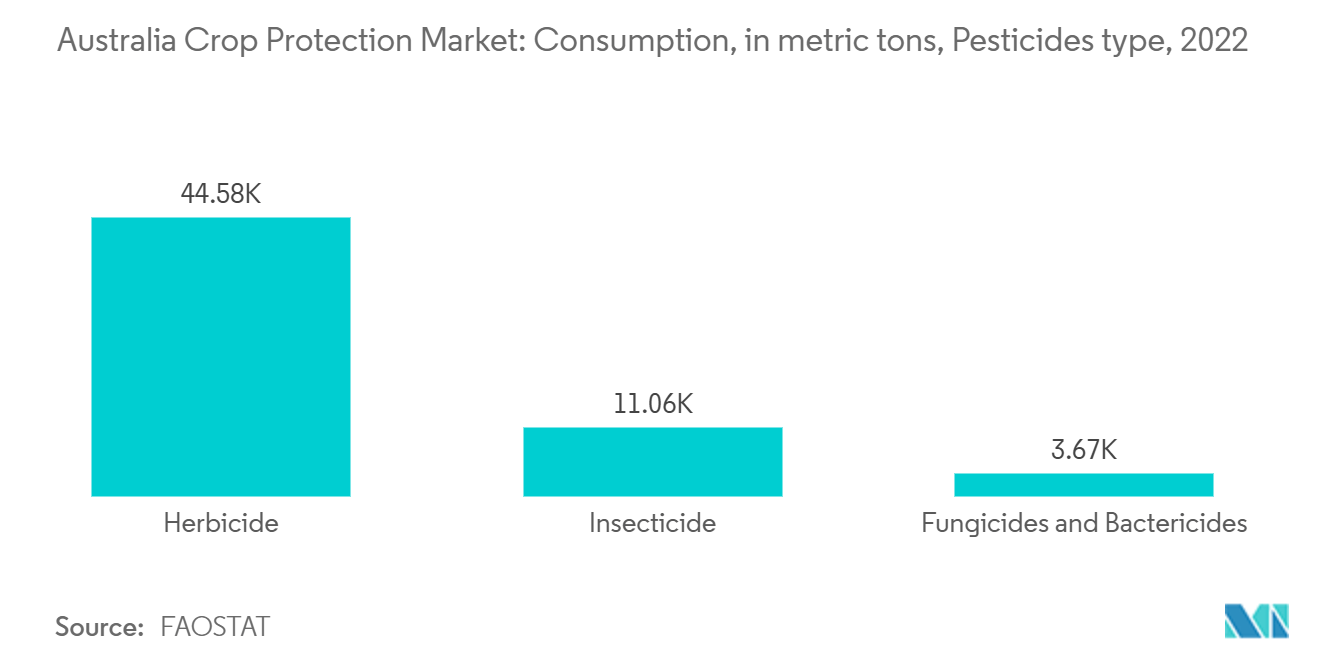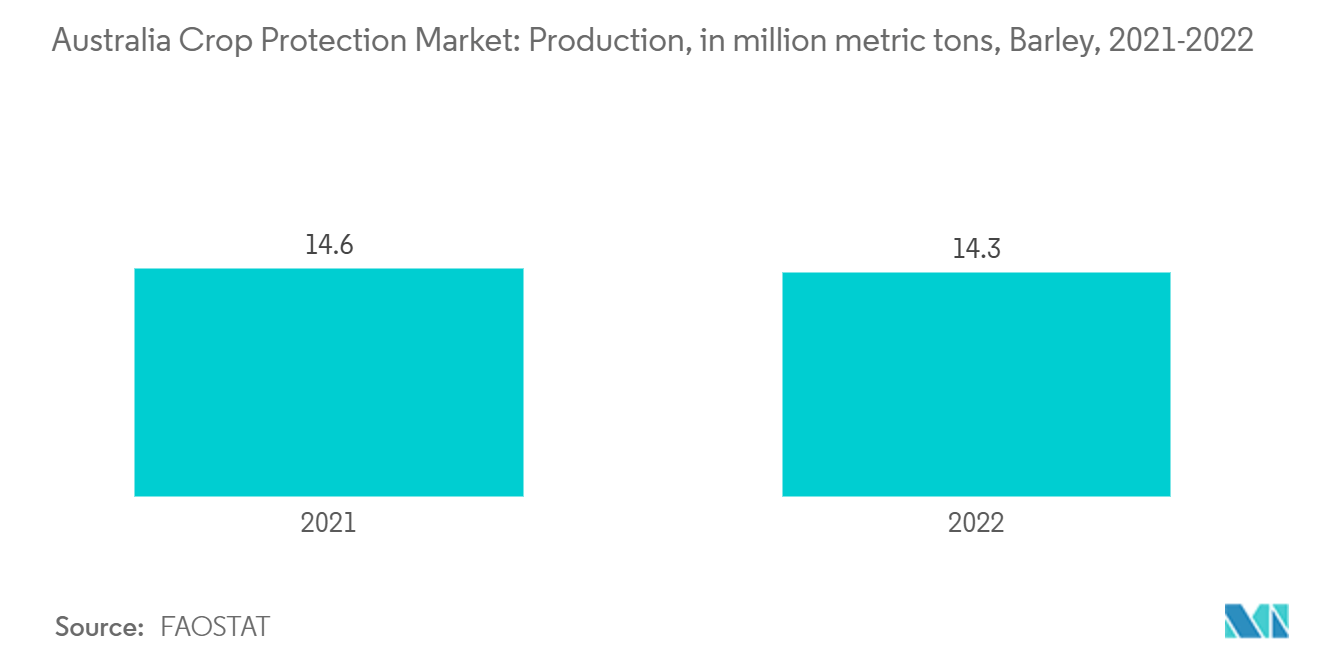Market Trends of Australia Crop Protection Chemicals (Pesticides) Industry
Herbicides dominated the Australia Crop Protection Chemicals Market
- Weeds pose a major biosecurity challenge to Australian crops, leading to reduced yields and significant financial losses for producers. Consequently, the demand for herbicides has surged, making them the dominant segment in Australia's crop protection chemicals market. For instance, as of 2024, the Australian Bureau of Agricultural and Resource Economics reported that out of roughly 3,207 introduced plant species that have naturalized in Australia, around 500 have been classified as noxious or are under legislative control. Furthermore, a notable shortage of farm labor, particularly for manual tasks like weeding, has emerged. Herbicides present an efficient means to manage weeds, minimizing the need for extensive human labor, thus becoming increasingly appealing to farmers. For instance, data from the World Bank indicates that in 2022, agricultural employment in Australia constituted 2.20% of total employment, down from 2.49% in 2021. This decline in agricultural labour has spurred the rising reliance on herbicides. According to FAO, in 2022, Australia utilized 44,580 metric tons of herbicides, outpacing insecticide usage at 11,059 metric tons and fungicides and bactericides at 3,672 metric tons.
- Furthermore, advancements in targeted herbicide formulations and application technologies, such as precision agriculture, have enhanced the effectiveness and ease of herbicide application. This trend is particularly pronounced among larger commercial farmers. For instance, in June 2024, Bayer introduced the XtendFlex herbicide tolerance technology in XtendFlex cotton for commercial use in Australia. They also secured approval for the XtendiMax 2 Herbicide with VapourGrip Technology for over-the-top application, providing Australian cotton growers with enhanced flexibility in their weed management approaches. Collectively, these dynamics underscore the escalating demand for herbicides in Australia, positioning them as indispensable tools for bolstering agricultural productivity and addressing weed-related challenges.

Increasing Usage of Pesticides in Cereals and Grains
- Cereals play a vital role in Australia's healthy diet. Australia cultivates major cereals, including wheat, barley, oats, canary, and triticale. However, these crops face threats from common pests like cutworms, armyworms, mites, Helicoverpa, and aphids, leading to yield losses. Barley, like other cereals, is susceptible to various insect pests, with aphids being the primary concern in Australia's northern growing region. Research indicates that aphid feeding significantly reduces barley yields in this area. For example, FAO data shows barley production in Australia fell from 14.6 million metric tons in 2021 to 14.3 million metric tons in 2022. This year-on-year decline in barley and other cereals, attributed to pest damage, is driving an increased demand for crop protection chemicals, thus fueling market growth.
- Supportive initiatives promoting natural crop protection products are significantly driving market growth. In 2022, Cesar Australia, in collaboration with the University of Melbourne and backed by the Grains Research and Development Corporation, unveiled a new tool. This initiative was part of the Australian Grains Pest Innovation Program (AGPIP). The tool aids Australian grain growers by providing a chemical toxicity table for beneficial insects, enhancing on-farm decision-making. This toxicity table details the effects of commonly used pesticides on key beneficial insect groups, which can naturally control pests. Consequently, as cereal production declines due to pest attacks and there's a growing preference for natural crop protection, the market is poised for growth during the forecast period.


